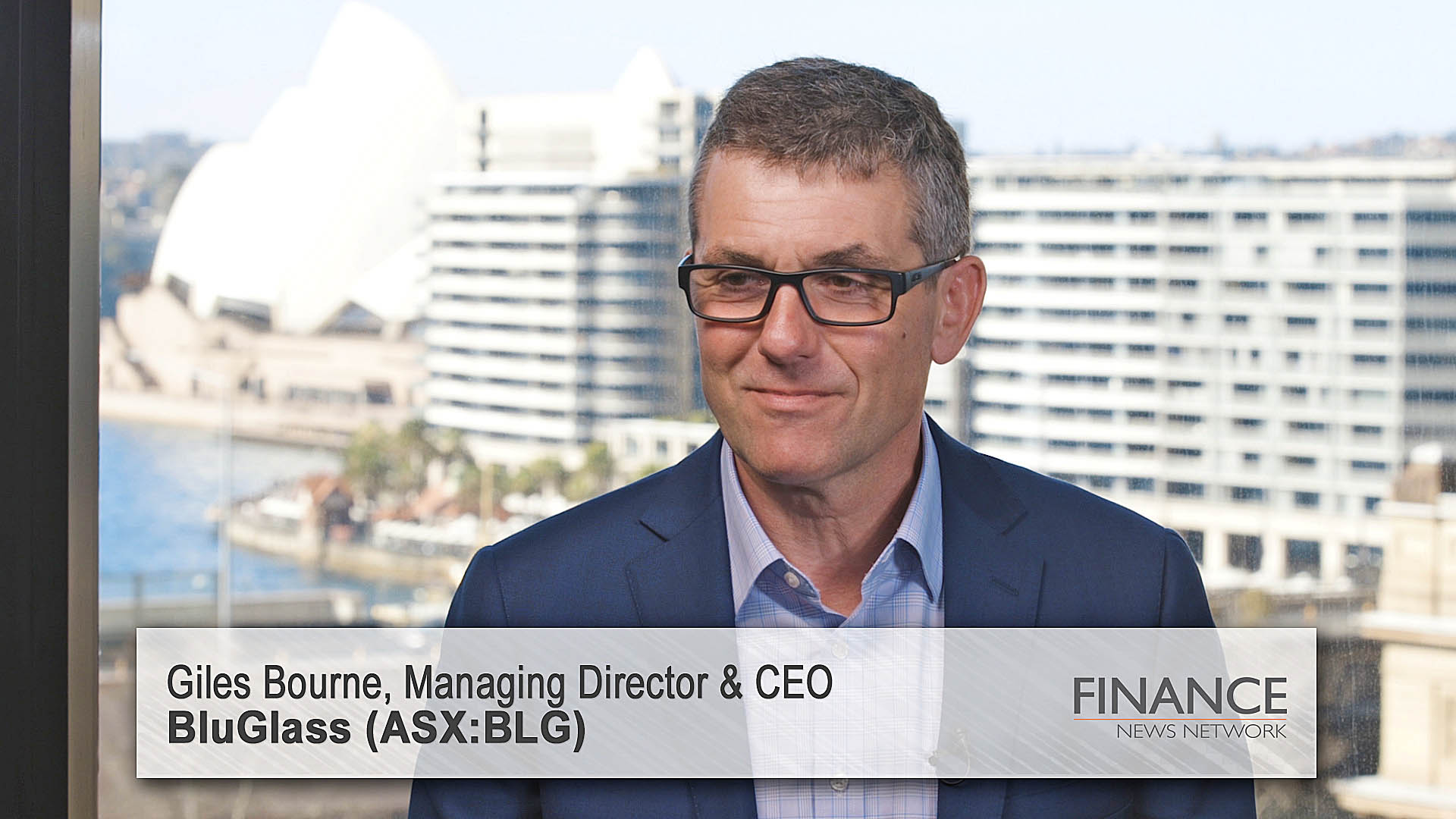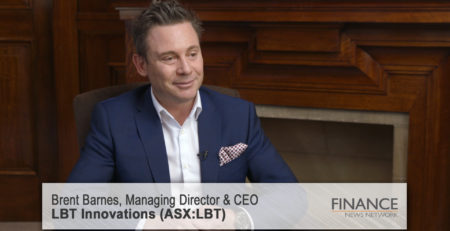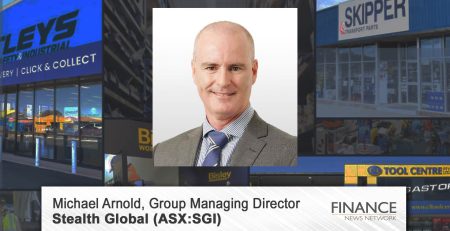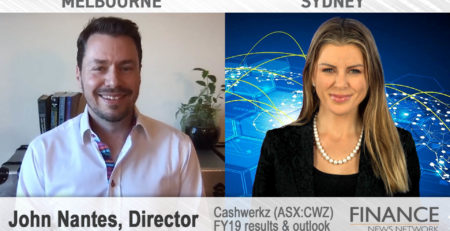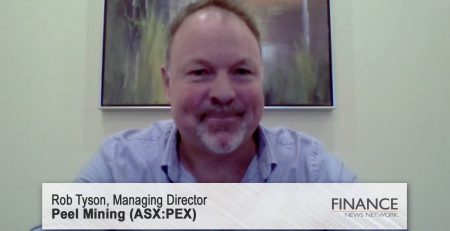BluGlass (ASX:BLG) partners with Bridgelux
BluGlass Limited (ASX:BLG) Managing Director Giles Bourne discusses partnering with LED lighting developer Bridgelux, enabling smaller and cheaper LEDs, and what the future holds with BLG’s new facility.
Jessica Amir: Thanks for tuning into the Finance News Network. My name is Jessica Amir and today we're joined by Bluglass managing director, Giles Bourne. Giles, great to see you again and welcome back.
Giles Bourne: Well thanks for having me back on the show.
Jessica Amir: So today we're talking about your new joint development deal with a company called Bridgelux, which is a developer and manufacturer of LED. So congratulations on the deal. So just start off by telling us about Bridgelux and also the significance of the deal.
Giles Bourne: So Bridgelux are a Californian-based LED manufacturer. They've been in the industry for a number of years. And what's interesting about Bridgelux is they've got a very unique set of partnerships there. Our biggest shareholder is a company called Kaistar, out of China, and Kaistar in turn is a joint venture between CEC, which is a large electronics manufacturer in China and Epistar, which is one of the world's largest LED manufacturers. So a very interesting sort of stable of companies behind them and unique strategic relationships they have with them. But they are growing in the general lighting market. We're talking about general overhead lighting, also some specialist lighting areas as well, but mostly in the general lighting market. And they obviously want to grow their market share. They're looking at ways of driving up efficiencies and that's why we think this relationship with Bridgelux, its non-exclusive JDA is a very important ways of bringing our technology to market and also giving them an advantage as well.
Jessica Amir: Before we learn more about what the collaboration actually means, I just want to pause for a second. If you could expand or remind the viewers what cascade LEDs are and why they're so commercially significant.
Giles Bourne: The industry have been striving of driving up efficiency and one of the solutions that have been widely explored through the industry, but it's a very difficult thing to do, is called cascade LEDs. And that means literally stacking LEDs one on top of the other. So it means that you have a small surface area but you can drive up efficiencies. One of the known challenges in the industry is called efficiency droop. And what that means is when you get an LED and you put current in, it doesn't equate to more light out as you put more current in. And to overcome that is basically building a cascade LED and the enabling technology to that is called a tunnel junction. So a tunnel junction is something that we've been working on for the last year or so. Very recently, we filed a new patent on that which was granted in the US, which is the building block for this cascade LED. And what we're trying to strive here is actually pushing up the efficiencies greater than 10 per cent and bringing down the cost of the LED and that is key to the industry.
Jessica Amir: Now I'd like to dive into the JDA or the joint development agreement, what it is, what the terms are, and what does the future hold in terms of goals and objectives?
Giles Bourne: So the joint development agreement we've put in place with Bridgelux is a non-exclusive agreement, and the way it's working is that they will pay for development work that we'll do at Bluglass. They'll be buying wafers off of us as we go through this program. The ultimate goal of this is obviously to put this technology into market using our background IP and remote plasma chemical vapor deposition, our low temperature RPCVD technology, and their know-how in device structures, so taking all the work we've done in building these tunnel junction devices now and then their know-how in the devices, bringing this as a cascade LED to market.
Giles Bourne: So we've done this on a non-exclusive basis, but they get a first-move advantage in working with us. But at the same time it gives us an opportunity to explore the broader market as a whole. So we'll work with them very closely to get this technology to market. But clearly there's other avenues in where we can take the tunnel junction technology as well. So the nature of the non-exclusive arrangement means that we're working with them for general lighting, but obviously we can work on other tunnel junction applications, cascade for other applications, but clearly the application they're working on, their general lighting's a very big one and we see this as an important relationship for Bluglass and a good way for taking the technology through to commercialisation.
Jessica Amir: Great. And just lastly, before we let you go, zooming out and looking at the company at a broader level, what can they expect for FY 2020?
Giles Bourne: We've just upgraded our facility so we've added in two extra machines that one of those machines has already come online. We announced that recently. The larger machine will come online later this year and that's part of our scaling project. So it's bringing in a much bigger machine. This has been supported by Axtron, this development. So those will come online. That gives us greater capacity not only for paid foundry work but also to address some of the opportunities the market we haven't been able to do. Having the greater capacity gives us a lot more flexibility. So we've always been about a broad range of applications for RPCVD. LED's obviously been one of the main drivers, but micro LEDs has been interesting. We've got customers in the micro LED space and there are a number of other really interesting applications such as laser diodes we've already been working on.
Giles Bourne: So we see this as giving us greater capacity, more opportunity on the sort of platform approach for RPCVD. This is all underpinned by this IP portfolio we've been developing, and that continues to grow as more patents get granted, the most recently the tunnel junction one that got granted in the US and we'll continue to build on that as our underlying foundation for the RPCVD. So we've got our work cut out for us in 2020 but it's going to be exciting as we give ourselves great opportunity to go through to commercialisation.
Jessica Amir: Very exciting indeed. And congratulations again on the agreement with Bridgelux. Giles Bourne, thank you very much.
Ends
Copyright 2019 – Finance News Network
Source: Finance News Network

